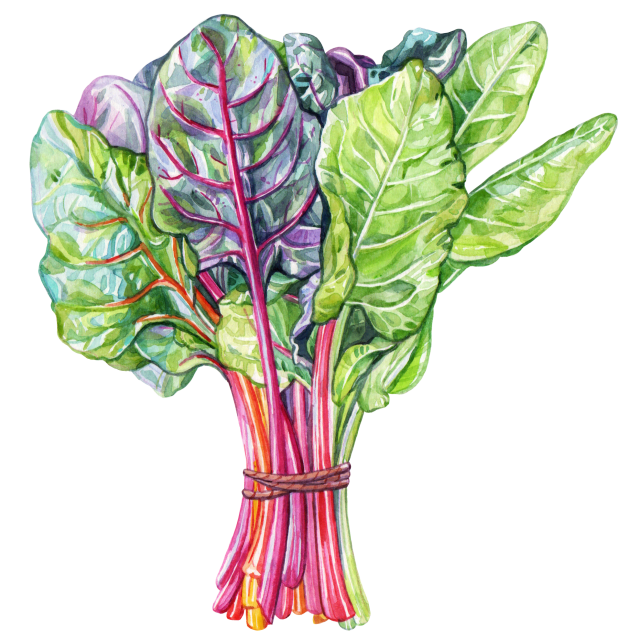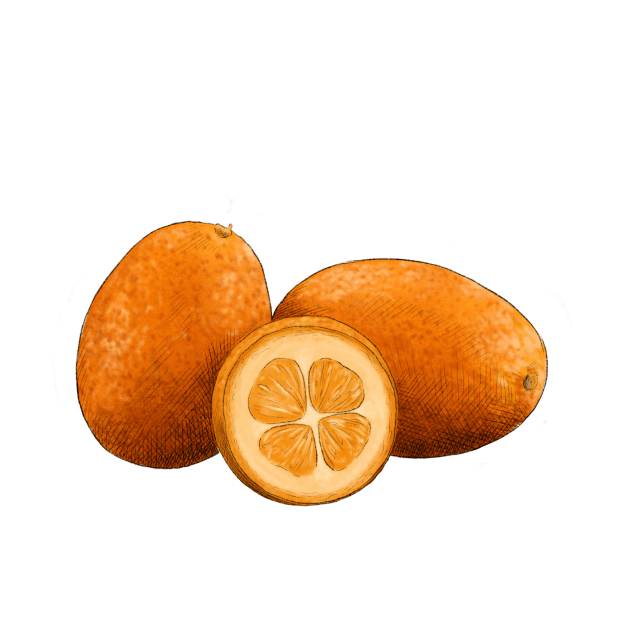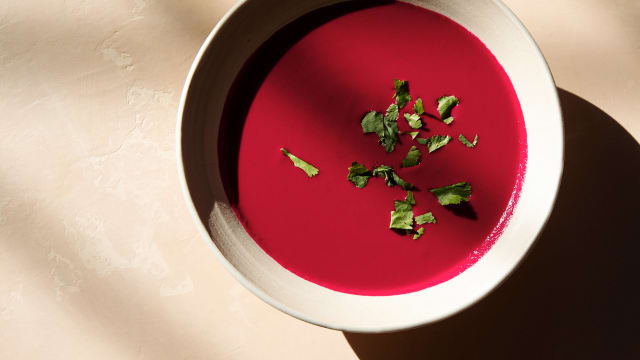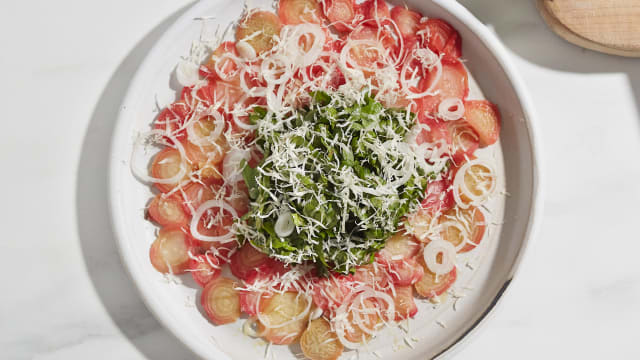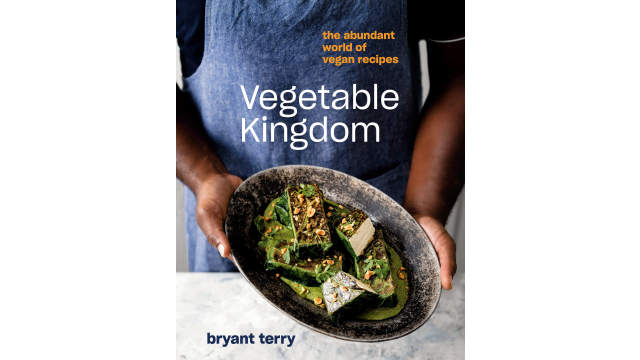Beet
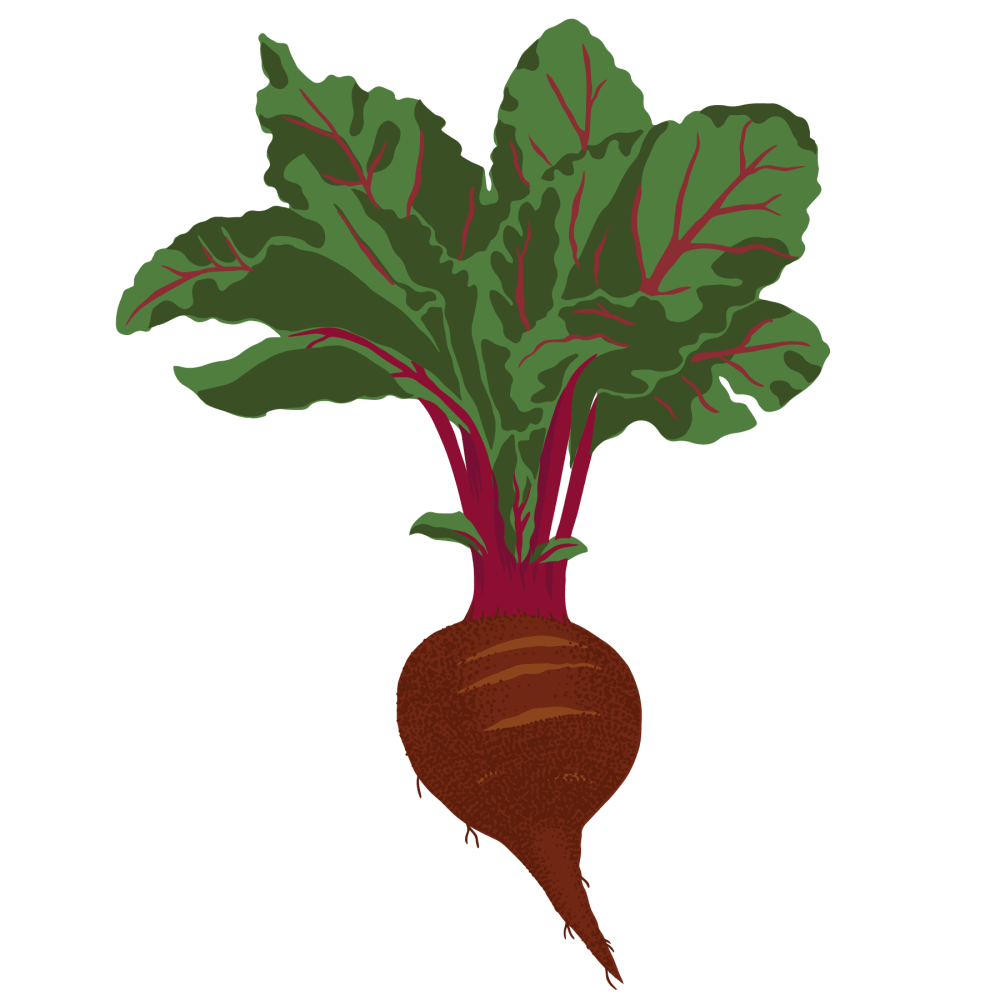
Latin name: Beta vulgaris subsp. vulgaris
Other names: beetroot
Uses: root and green vegetable, sugar, food coloring
What are beets?
Beets are hardy root vegetables known for their vibrant color — usually varying shades of purple, but sometimes orange, yellow, candy-striped, or even white — and prized for their cold tolerance and storability. Beets are one of those foods that people either love or hate, but (as with any other food) haters probably haven’t had them properly prepared. Sure, they can taste like dirt and will stain your cutting board, but with a little salt and fire these humble root vegetables can be transformed into something elegant.
Why are beets healthy?
Packed with nutrition from root to stalk, beets are rich in antioxidants that help detoxify the liver and support digestion, nitrates to improve brain and athletic performance, and pigments called betalains that can help reduce inflammation and support weight loss. If that isn’t enough, beets are also gorgeous to look at on your plate.
What do beets taste like?
Being a root vegetable, all beets are naturally sweet and earthy. Golden beets taste a little milder than red beets, with more slightly grassy-vegetal flavor. There is a slight pleasant bitterness that can be tempered with salt and acid; this will also help rid them of any dirt flavor.
How do I use beets?
Along with cabbage and potatoes, beets are central to Eastern European cuisine. They’re a key ingredient in borscht and the Soviet-era salad known as “herring under a fur coat.” Along with carrots, their earthiness lends them well to roasting. Toss roasted and sliced golden or red beets in a flavorful nut oil with a drizzle of honey and a dribble of wine vinegar as a gorgeous standalone side dish or toss them onto winter salads.
Purée cooked beets with olive oil and lemon juice and stir into fresh cheese (or chèvre, quark, or labneh) or hummus and serve with warm flatbread. Beet leaves can be cooked the same way as chard.
If you pickle beets, be sure and add ginger, shallots, and coriander seed to the jar. (Later, use some of the fuschsia brine to dye hardboiled eggs hot pink). Their color also makes them a proper alternative to red meat for a vegan-friendly tartare. Candy-striped Chioggia beets can be used in all the same ways as red or golden beets, but the stripes fade when cooked.
What do beets pair well with?
Beets love vinegar, herbs like dill and parsley, onions, dairy like yogurt and feta, and their sweetness meshes beautifully with coconut milk.
Where do beets grow?
Though the beet’s wild ancestor hails from the rocky coasts of the Mediterranean, this fast-growing cool-weather crop is found all over the northern hemisphere. (Sugar beet production is dominated by Russia, France, and the United States.) To grow them yourself, plant seeds early spring in deep, well-drained soils.
How to buy beets:
Ideally, they'll still have their leaves attached, which should be brightly colored and not wilting. The roots should be firm, not yielding to a squeeze or shriveled. They'll keep in the crisper drawer for weeks, but look out for moldy spots.
Fun beet fact:
The betalain pigment gives beets their signature color, but not everyone can break this pigment down during digestion. It may explain why you’ve been startled to find a magenta surprise in the toilet a day or two after eating beets.
